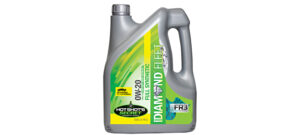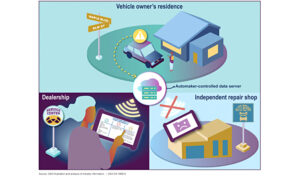Contrary to expectations, the lack of VIO growth between 2020 and 2024 will not impede the aftermarket
Fort Wayne, Ind.—The number of vehicles in operation (VIO) does not necessarily determine aftermarket sales. More often, the key drivers of aftermarket sales are the types of vehicles in operation and their mileage.
And while the U.S. VIO has been relatively flat over the past three years (2020 through 2022) and is expected to continue through 2024, the latest Lang Aftermarket iReport states there will be “significant” car and light truck aftermarket product growth during these years.
Here are key takeaways from the report.
7 Million Vehicles Not Sold Through 2022
Higher vehicle prices and increasing interest rates have added to the new vehicle market’s challenges. Accordingly, about 7 million fewer vehicles were sold in the U.S. over the past three years (2020 through 2022) compared to the annual average of the new vehicle market between 2015 and 2019.
Downward pressure on new vehicle production and sales will continue for the next two years. Lang Marketing projects that sales in 2023 and 2024 will fall about 12% below the yearly new vehicle average recorded between 2015 and 2019 (17.2 million).
Aftermarket Impact of No VIO Growth
Contrary to expectations, the lack of VIO growth between 2020 and 2024 will not impede aftermarket sales. In fact, aftermarket product volume increased significantly during 2021 and 2022, recovering from COVID-19, despite the flat VIO.
Lang Marketing expects this trend to continue through 2024, with aftermarket growth at least as strong during 2023 and 2024 as in the five years of VIO expansion from 2015 through 2019.
Three types of vehicles and their use are key to generating aftermarket product volume: older vehicles, light trucks and foreign vehicles:
Older Vehicles
The average age of vehicles in the U.S. climbed by about 1.5 years from 2012 to 2022, and the number of older vehicles, especially those at least 12 years of age, increased significantly. Much of the aftermarket product growth during the past few years (when the VIO was flat) has resulted from an older mix of vehicles using more products per mile than in past years.
Light Trucks
Light trucks average significantly more aftermarket product volume per vehicle than passenger cars. This is due to consumers purchasing more accessories for light trucks than passenger cars, the higher prices of many components for light trucks compared to cars, and other high-priced parts that are unique to light trucks.
Light Truck VIO Majority
Over the past 20 years, light trucks have significantly increased their share of new vehicle sales and, accordingly, they now represent a VIO majority. This light truck surge has helped to increase the volume of aftermarket products, independent of VIO growth.
Foreign Nameplate Vehicles
Foreign nameplates generally average higher annual repair and maintenance use for two reasons: foreign nameplates have above-average rates of Do-It-For-Me repair (which has higher product costs at user-price than Do-It-Yourself repair), and their replacement parts generally are more expensive than those for domestic nameplates (greater use of OE brands, etc.).
Not All Vehicles Are Equal in Aftermarket Impact
The types of vehicles on U.S. roads are more important to aftermarket growth than the number of vehicles in operation. The growth of older vehicles, light trucks, and foreign nameplates on U.S. roads has increased the average aftermarket product volume per vehicle.
The growth of these three types of vehicles (and their miles on U.S. roads) will generate increased aftermarket product use over the next several years, even with a flat VIO.







Comments are closed.